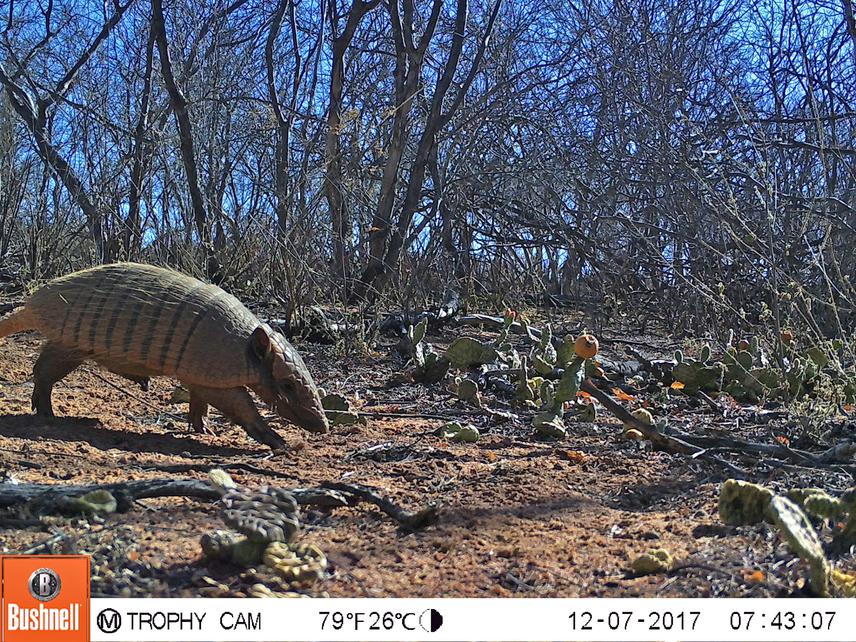Tainá Sherlakyann Alves Pessoa
Other projects
2 May 2014
Structure and Conservation Status of Alouatta belzebul (Linnaeus, 1766) and Sapajus flavius (Schreber, 1774) Populations in the Atlantic Forest, Brazil
To evaluate the efficiency of land sharing and land sparing strategies for the conservation of medium and large mammals and the maintenance of productive areas in the Caatinga.

Euphractus.
The exploitation of natural areas has been intensified with increasing human population, especially to satisfy needs for food production through agriculture and livestock. In this context two biodiversity-friendly strategies of landscape management emerge: land sharing and land sparing. While land sharing proposes the integration of areas for food production with the conservation of small wildlife- friendly habitats, land sparing predicts the intensification of techniques for large-scale food production and the protection of larger forest areas aside agricultural stands. Considering that Brazilian agricultural production and biodiversity is amongst the most representative of the world, filling up this knowledge gap is a matter of national and global relevance. In particular, quantifying the benefits of land sharing and land sparing strategies for biodiversity in the semiarid region of the Caatinga, a complex seasonally tropical dry forest (STDF) covering about 840,000 km2, may help the country to achieve Aichi biodiversity targets as well as national environmental policies. Despite some advances, several locations in the Caatinga are still deficient in basic information on mammal ecology and distribution. This is the case for our project site, the Catimbau National Park, where the only study conducted within its boundaries recorded only species of small mammals. Assuming that medium and large mammals perform key roles in community dynamics, such as predation and seed dispersal, they are good models for understanding how changes in landscape composition and configuration driven by agricultural practices affect biodiversity.
This study aims to evaluate the efficiency of land sparing and land sharing strategies for conservation of large and medium mammals and the maintenance of productive areas in the Caatinga. To collect the data we will establish camera traps, track plots, search for mammal signs in the study area, and make semi-structured interviews with people living in the surrounding of sampling points. We will calculate occurrence probability for each species and simulate mammal communities under contrasting scenarios of remaining vegetation and distance from the core area of Catimbau National Park. We expect to disseminate the information to the agribusiness sector of the region, propose biodiversity-friendly agricultural practices for local stakeholders and publish the data in scientific journals. Our intention is to reconcile agricultural production and biodiversity conservation in this wilderness area, which is amongst the most diverse semiarid region on Earth.